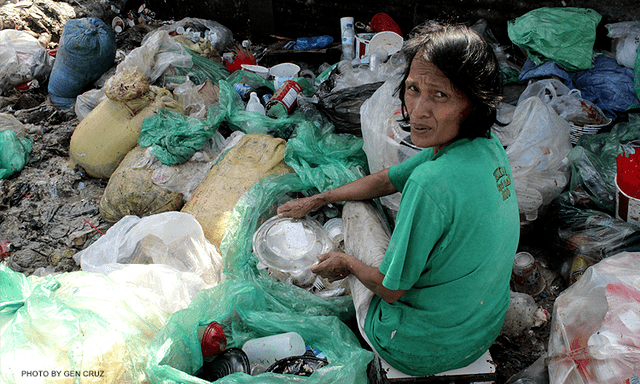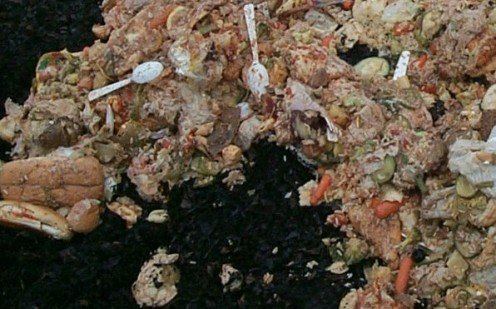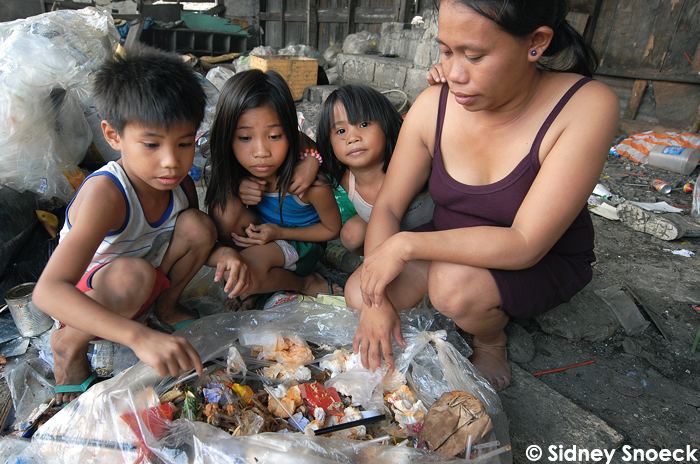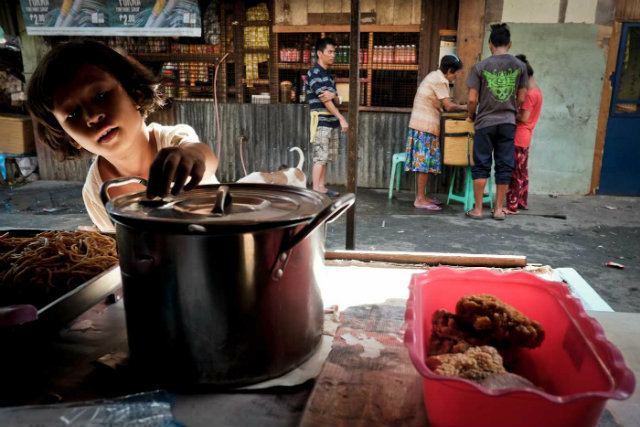Similar Batchoy, Adobo, Nutribun, Bopis, Gulaman | ||
Pagpag is a Tagalog term for leftover food from restaurants (usually from fast-food restaurants) scavenged from garbage sites and dumps. Pagpag food can also be expired frozen meat, fish, or vegetables discarded by supermarkets and scavenged in garbage trucks where those expired foods are collected. The word in the Bisayan language literally means to "shake off the dust or dirt", and refers to the act of shaking the dirt off of the edible portion of the leftovers. Pagpag can be either eaten immediately after it was found in the trash or cooked in variety of ways after collecting it.
Contents
- Preparation
- Health concerns
- Solutions on stopping the spread of pagpag food
- Media coverage
- Other uses of the word
- References

The act of eating pagpag arose from the practical challenges of hunger that resulted from extreme poverty. Selling pagpag has been a profitable business in areas where poor people live. Pagpag is also called batchoy, which is derived from the Bisayan dish with the same name. Technically, batchoy is soup-based though the term batchoy that is used to refer to leftover food from trash may be a meal cooked differently like fried pagpag batchoy. Persons who scavenge leftover food from garbage are called mambabatchoy.

Preparation

After dirt and inedible stuffs are removed, pagpag can be eaten on site where it is found. It can also be processed further, most commonly by frying it in hot oil depending on the condition of the food. Filipino politician and former actor Isko Moreno used to scavenge leftover food and calling it pagpag batsoy after frying it. Small cottage industries have arisen around pagpag with impoverished people making a living scavenging, collecting, processing, and selling the processed pagpag to other poor people. A cook in a restaurant in Tondo, Manila prepares pagpag in traditional Filipino cooking, such as pagpag à la kaldereta or adobo, with the mixture of the leftover chicken from Jollibee and KFC as the main ingredient.
Health concerns

Health risks include ingestion of poisons, toxins, and food-borne illnesses. The National Anti-Poverty Commission warns against eating pagpag because of the threat of malnutrition and disease. Some of these diseases include Hepatitis A, typhoid, diarrhea, and cholera. Despite the dangers of eating pagpag, a vendor of pagpag claims that no one has died eating the pagpag he sells. There are also persons who do not get sick out of eating pagpag due to overproduced antibodies of their immune system. There are persons, specifically children, who get sick, though.
Solutions on stopping the spread of pagpag food
Hunger has been linked to the spread of pagpag food and the food crisis in 2008 was said to be the cause in the rise of poverty in the Philippines. The National Statistical Coordination Board recommended the administration of Philippine President Benigno Aquino III to reduce poverty. Department of Social Welfare and Development Secretary Dinky Soliman said that the government has been addressing the issue and helping the poor through feeding programs and conditional cash transfers. In 2015, a survey conducted by the Social Weather Stations revealed that incidence of hunger in the Philippines was reduced but the Trade Union Congress of the Philippines-Nagkaisa attributed the decrease of hunger to the rapid spreading of pagpag.
Zero waste management is seen as a viable solution in stopping the proliferation of pagpag food.
Media coverage

Extreme hunger in the Philippines that features pagpag has been covered in various television documentaries. In 2003, the episode entitled "Basurero" (garbage collector) of the documentary show I-Witness of GMA Network tells a story of poor people collecting leftovers from the trash of fast food restaurants. In the said episode, those people who scavenged for food in trash are called magbabatchoy, which was derived from the word batchoy, a popular Filipino dish. As shown in ABS-CBN in 2006, Probe, another documentary show, features pagpag and mentions health risks of eating pagpag.
After CNN reported about pagpag in 2012, the reality about problems of hunger in the Philippines was brought to the world's attention. Daily Mail also featured an article about residents of Payatas preparing pagpag in celebration of Pope Francis' visit to the Philippines.
Other uses of the word
In common use, pagpag means the act of shaking off dust or dirt. Pagpag is also a Filipino term for a superstition saying one can never go directly to one's home after attending a funeral unless they have done the pagpag. This practice is observed to avoid the following of the dead's soul to the home of the visitor of the wake.
